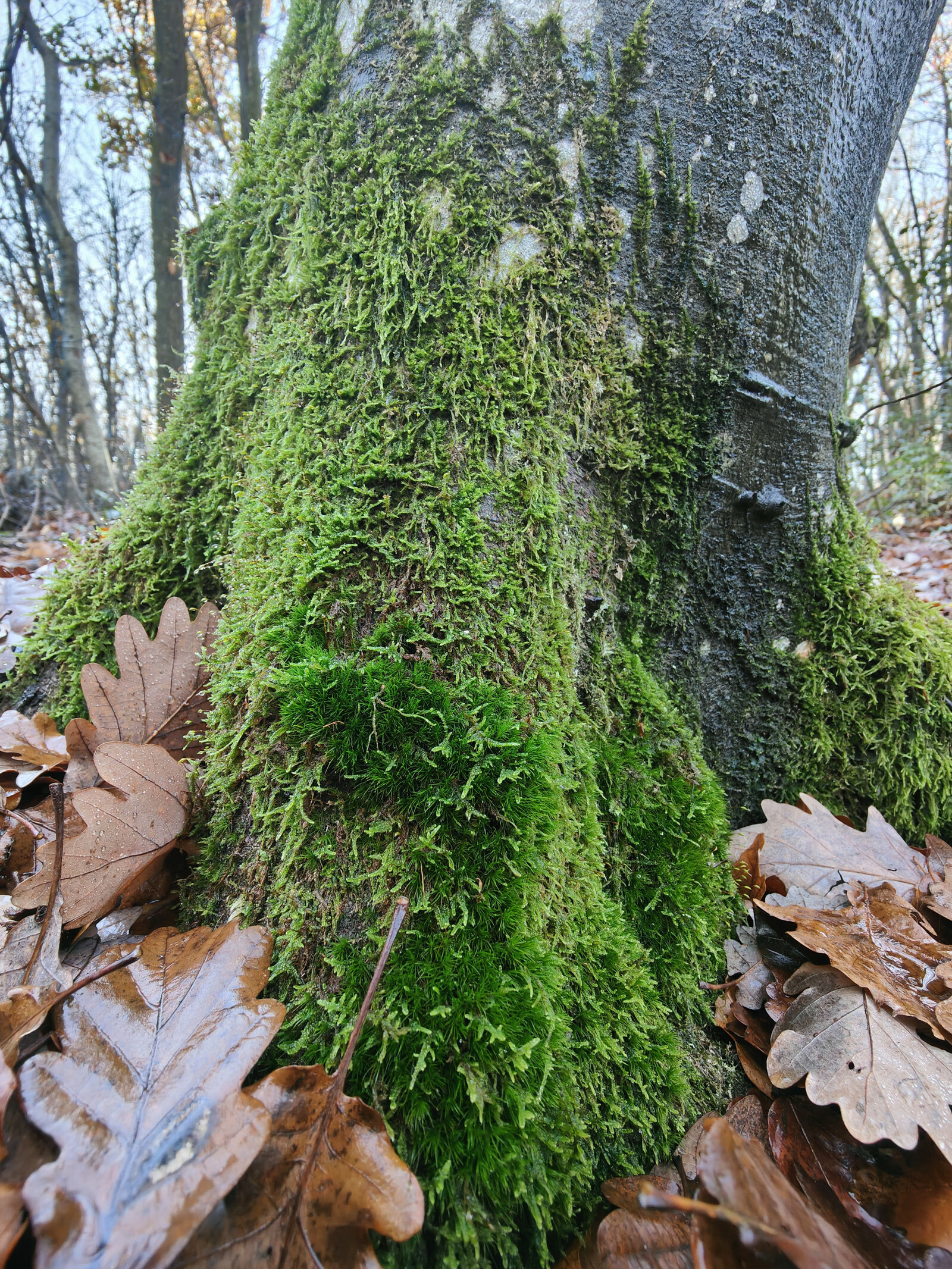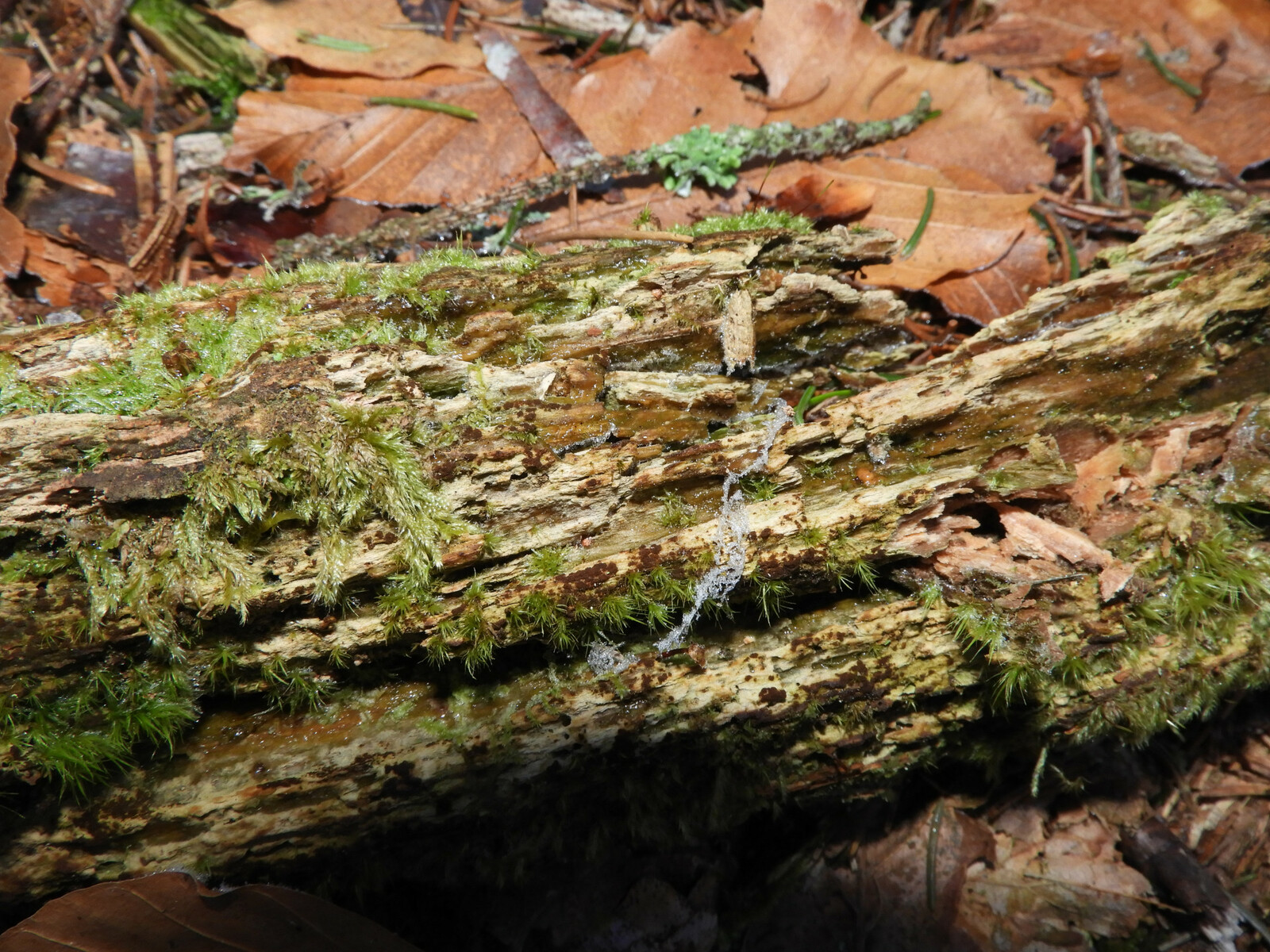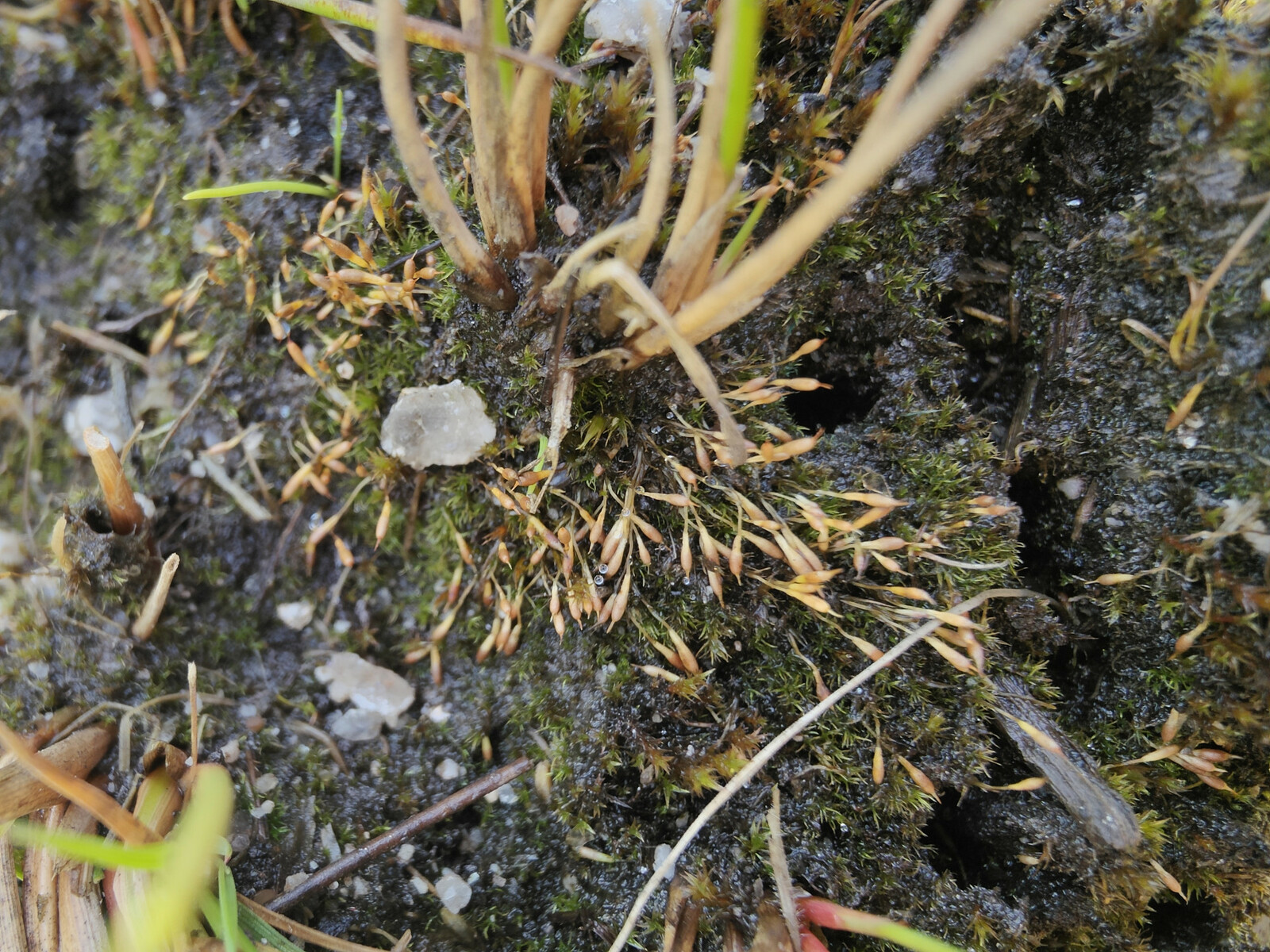Bryophytes protégées de France - Etude biologique, fonctionnelle et conservatoire
Dicranum viride
Gréaume, Aurélien & Hugonnot, V. & Pépin, Florine & Blin, Mihram & Cadet, Serge & Keller, Johann & Chauliac, Christophe. (2023). The vegetative reproduction of Dicranum viride (Sull. & Lesq.) Lindb. as a likely explanation for micro-habitat and stand-type relationships – implications for forest management. Lindbergia. 2023. 10.25227/linbg.01166.Dicranum viride is a bark-dwelling and woodland species listed in Annex II of the ‘EU Habitat Directive’. It occurs mainly in heavily managed forests. The effects of stand age, tree diameter and host tree species on the occurrence of D. viride have been studied at two distinct scales. We suggest that the effects of tree diameter and tree species are mainly related to bark roughness. The occurrence of D. viride on trees with a smooth bark is strongly related to the abundance of Hypnum cupressiforme var. filiforme, which may facilitate establishment of large leaf fragments on smooth bark. Vegetative dispersal and establishment of D. viride are inferred from the current occurrence pattern and biological traits of the species and are hypothesized as having been critical for its survival within managed forests. A straightforward and widely applicable new method of compartment prioritization is provided to facilitate the implementation of modified interventions. |
 |
Buxbaumia viridis
Hugonnot, V. & Pépin, Florine & Virginie, Bichon (2023). Carnets-botaniques-n°128. 10.34971/aqef-9m56. Hugonnot V., Pépin F. & Bichon V., 2023-Révision chorologique et écologique de Buxbaumia viridis, espèce protégée en FranceLa chorologie et l'écologie de Buxbaumia viridis, espèce réputée strictement montagnarde à subalpine saprolignicole, sont revues sur la base d'observations nouvelles, réalisées récemment en France. Cette espèce est en fait largement répandue en dehors des massifs montagneux, en plaine et dans la région méditerranéenne, mais sous forme de populations gamétophytiques indépendantes. D'autre part, sous cette forme, elle semble posséder une amplitude écologique beaucoup plus large. Elle s'est révélée capable de coloniser des aulnaies marécageuses, des tremblaies, des corylaies, etc., voire même des habitats non forestiers secs, comme des rochers granitiques humifères, ce qui contraste fortement avec les habitats habituellement recensés. Les investigations méritent d'être poursuivies sur le terrain et au laboratoire afin de cerner avec plus de précision encore le comportement écologique et la répartition nationale de l'espèce. Les implications conservatoires de ces nouveaux apports sont brièvement discutées. Guillet, Ameline & Hugonnot, V. & Pépin, Florine. (2021). The Habitat of the Neglected Independent Protonemal Stage of Buxbaumia viridis. Plants. 10. 10.3390/plants10010083. Buxbaumia viridis is a well-known species of decaying deadwood, which is protected in Europe. All previous studies dealing with the ecology of B. viridis rely on the sporophyte generation because the gametophyte generation is allegedly undetectable. Recent advances have shown that the protonemal stage, including gemmae, is recognizable in the field, thereby considerably modifying our perception of the species’ range and habitat. In France, we demonstrate the existence of independent protonemal populations, with the implication that the range of B. viridis is widely underestimated. Sporophytes and sterile protonema do not share the same ecological requirements. The sporophyte stage was found in montane zones, almost exclusively in coniferous forests, and on well-decayed wood. The sterile protonemal stage extends to lower elevations, in broad-leaved forests, and on wood in a less advanced state of decay. Our results suggest that the humidity could be one of the most relevant explanatory variables for the occurrence of sporophytes. Opening of the canopy seems to promote sporophyte development. Previous anomalous observations of B. viridis growing on humus or bark might be explained by the presence of a protonemal population that is able to produce sporophytes under rarely occurring but favorable climatic events. |
 |
Bruchia vogesiaca
|
Lysa nous rejoint dans le cadre de sa licence "Etude, développement des espaces naturels". Lysa a étudié la biologie d'une espèce protégée au niveau national : Bruchia vogesiaca. Pendant plusieurs mois, Lysa a parcouru le plateau de Millevaches à la recherche de cette espèce afin d'étudier son cycle de développement en relation avec les perturbations des systèmes tourbeux. Une publication est en cours. |
 |
